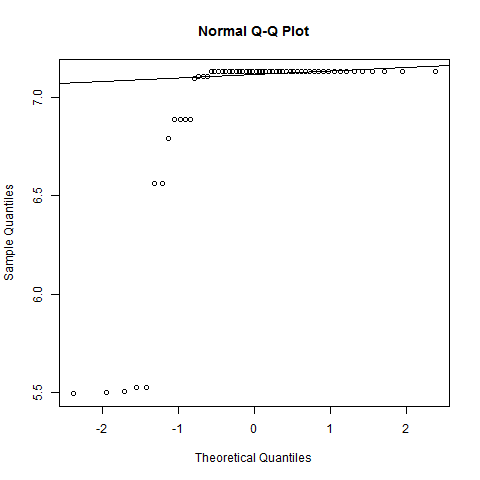I have two vectors that look like this:
I would like to make a significance test on the paired differences between the two vectors, as well as measure association.
The process of data generation is "known" to generate log-normal data, when randomly sampled. In this particular experiment:
- samples are not random, there is a selection bias towards higher values
- sample range has been trucated at the top (in this plot, upper limit is 1250)
The issue in (1) is unavoidable. It is, in fact, the inclusion criteria for the experiment (the values are from a PRNT experiment, and patients were selected for giving positive results).
The issue in (2), however, means that true values beyond the imposed limit are unknown, and thus the over-representation of this max value in truth hides a richer diversity of values.
If neither of the above issues were present, odds would be decent of having a good linear relationship of the log-transformed data. Unfortunately no step of data colection can be repeated, and I must make whatever analysis possible.
Using the usual log transformation on data doesn't help because of the issue (2) above. Parametric methods like t-test and pearson r are obviously out of question. I am inclined to use their non-parametric counterparts (paired wilcoxon and spearman correlation).
Is there any hope to find a transformation to mitigate the limitation in (2), and use parametric t-test/pearson r on this data?
QQ plot of the log transformed data


